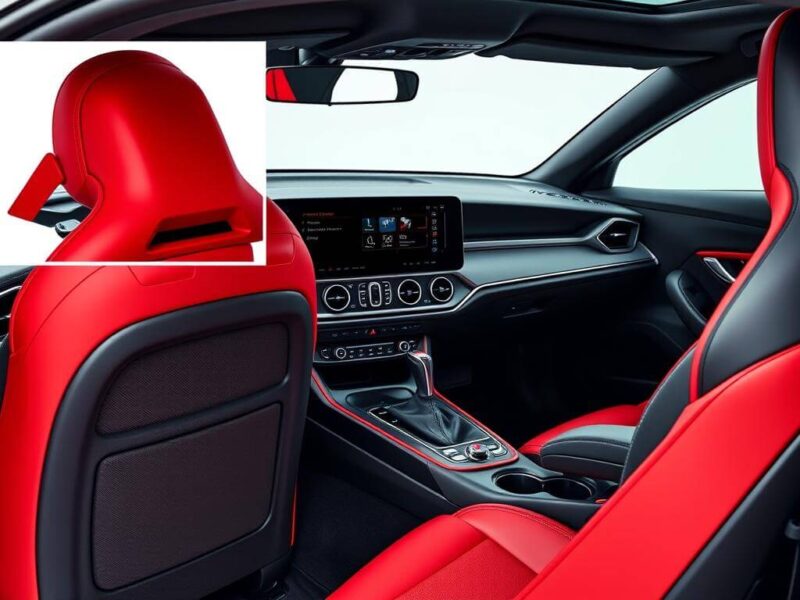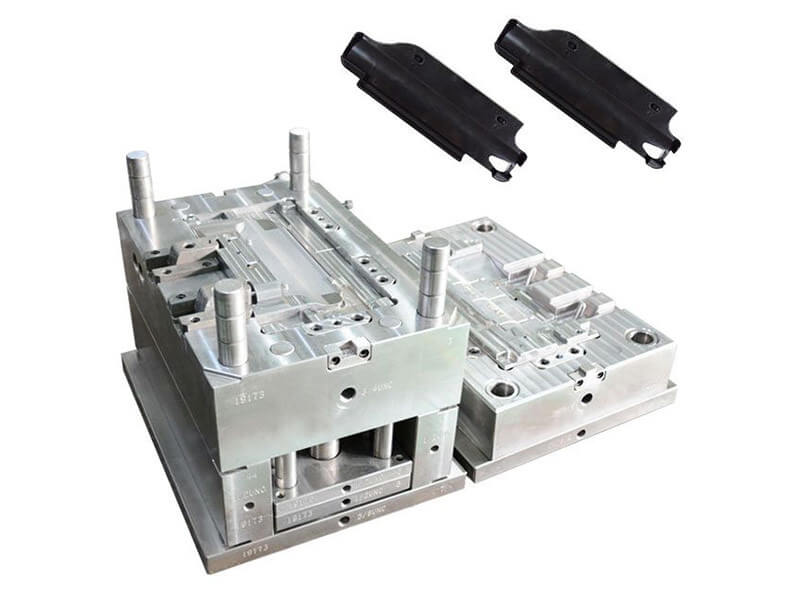
The automotive industry is experiencing a transformation driven by new technologies, evolving consumer demands, and stricter regulations. As a result, automotive precision molding has become increasingly important in producing high-performance, 비용 효율적, and eco-friendly components. 아래에, we delve into the five key trends shaping the future of automotive precision molding today.
1. Enhanced Precision with Micro Molding
The demand for automotive precision molding components that combine multiple functionalities and material properties is increasing. This trend is driving the adoption of multi-material molding and multi-shot molding technologies, which allow manufacturers to combine different materials in a single mold. These techniques enable the creation of components that are not only strong and durable but also lighter and more cost-effective.
For example, automotive precision molding techniques such as multi-shot molding can be used to combine rigid materials with flexible materials in a single automotive part, such as dashboard components or door handles. By combining different materials in one molding cycle, manufacturers can streamline the production process and reduce assembly costs, while also producing parts with enhanced functionality, like improved comfort, sound insulation, and safety.
These automotive precision molding techniques are particularly beneficial for producing complex automotive components used in modern vehicles, such as bumpers, interior panels, and electrical housings for electric vehicles. Multi-material molding allows for more precise control over part properties, enabling manufacturers to meet increasingly demanding design and performance standards.
또한, automotive precision molding plays a crucial role in enhancing vehicle sustainability by reducing material waste, improving recyclability, and optimizing production efficiency. By leveraging advanced molding technologies, manufacturers can develop lightweight, high-performance components that contribute to overall vehicle efficiency and safety.
To meet these demands, 정밀 금형은 이제 ± 0.005mm의 단단한 공차가있는 부품을 생산할 수 있습니다.. 이것은 첨단 자동차 전자 장치의 신뢰성과 성능을 보장하는 데 중요합니다.. 마이크로 몰딩은 또한 전통적인 성형 기술을 사용하여 생산하기 어려운 매우 복잡한 모양을 생성 할 수 있습니다.. 이 추세는 전기 자동차로의 전환으로 가속화되도록 설정됩니다. (EV) 그리고 스마트 차량은 계속됩니다.
2. 자동화 및 산업 4.0 완성
의 상승 산업 4.0 기술은 혁명을 일으키고 있습니다 automotive precision molding. 스마트 곰팡이, IoT 지원 센서가 장착되었습니다, 제조업체는 압력과 같은 실시간 매개 변수를 모니터링 할 수 있습니다, 온도, 성형 과정에서 습도. 이 데이터는 유지 보수 요구를 예측하는 데 사용될 수 있습니다, 사이클 시간을 최적화하십시오, 결함을 최소화합니다.
자동화는 또한 곰팡이 설계 및 제조로 확장됩니다, AI 기반 도구가 곰팡이 흐름 분석 및 예측 설계에 점점 더 많이 사용되는 곳. 이 도구는 시험 반복을 줄이는 데 도움이됩니다, 인간 오류를 최소화하십시오, 곰팡이 효율을 최적화합니다. For example, mold flow analysis can predict material flow patterns, ensuring that molds are designed for optimal part quality and minimal waste. 산업 4.0 integration enables faster production, lower defect rates, and increased consistency in the final products.
3. Multi-Material and Multi-Shot Molding for Complex Parts
The demand for automotive components that combine multiple functionalities and material properties is increasing. This trend is driving the adoption of multi-material molding and multi-shot molding technologies, which allow manufacturers to combine different materials in a single mold. These techniques enable the creation of components that are not only strong and durable but also lighter and more cost-effective.
For example, multi-shot molding can be used to combine rigid materials with flexible materials in a single automotive part, such as dashboard components or door handles. By combining different materials in one molding cycle, manufacturers can streamline the production process and reduce assembly costs, while also producing parts with enhanced functionality, like improved comfort, sound insulation, and safety.
These molding techniques are particularly beneficial for producing complex automotive components used in modern vehicles, such as bumpers, interior panels, and electrical housings for electric vehicles. Multi-material molding allows for more precise control over part properties, enabling manufacturers to meet increasingly demanding design and performance standards.
4. Sustainability and Eco-Friendly Materials
Sustainability is no longer just a trend but a necessity in the automotive industry. As pressure mounts for automakers to reduce their environmental footprint, automotive precision molding is evolving to meet these expectations. The industry is increasingly adopting eco-friendly materials such as bio-based plastics and recycled resins, which are suitable for automotive applications without sacrificing quality or performance.
또한, manufacturers are investing in energy-efficient molding machines and closed-loop molding systems that minimize material waste and energy consumption. 다음과 같은 기술 recycling plastic waste and utilizing energy-saving technologies help reduce the carbon footprint of automotive molding operations.
Moreover, regulatory requirements around sustainability are becoming stricter. As a result, automotive manufacturers must ensure that their molding processes meet environmental standards, while still delivering high-quality parts. This growing trend is pushing innovation in the materials used for automotive components, from lightweight metals to recycled thermoplastics.
5. Customization and Flexible Production
The need for customization in the automotive industry is on the rise. Consumers demand personalized vehicles, and manufacturers need to be able to deliver unique designs without sacrificing speed or cost. Precision molding is evolving to meet these needs by offering flexible production capabilities that can quickly adapt to new designs or market demands.
For example, automotive manufacturers are now able to quickly prototype and iterate on complex designs, using advanced 3D printing and rapid tooling techniques to reduce lead times and speed up time-to-market. Customization is also facilitated by flexible production models that allow manufacturers to easily scale up or down depending on demand.
This flexibility allows manufacturers to create a variety of components, from interior panels and dashboard elements to EV battery trays and chassis parts, all tailored to meet specific customer requirements. As the automotive market diversifies, the ability to produce highly customized, high-quality components quickly and efficiently will be a critical competitive advantage.
결론
The landscape of Automotive Precision Molding is evolving rapidly, driven by technological advancements, increasing consumer demands, and sustainability pressures. From micro molding and multi-material molding to Industry 4.0 integration, these trends are reshaping the way automotive parts are designed and produced. As automakers continue to push the boundaries of innovation, Automotive Precision Molding will play a crucial role in enabling the next generation of high-performance, 환경 친화적인, and customizable vehicles. With the growing emphasis on precision, 내구성, and sustainability, Automotive Precision Molding will be at the forefront of manufacturing solutions for advanced automotive components.
Ready to embrace the future of automotive precision molding?


One thought